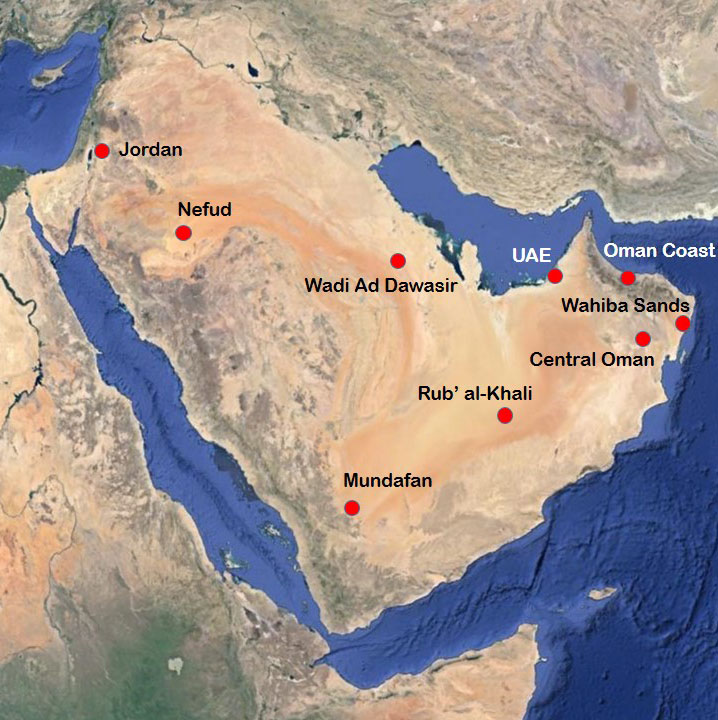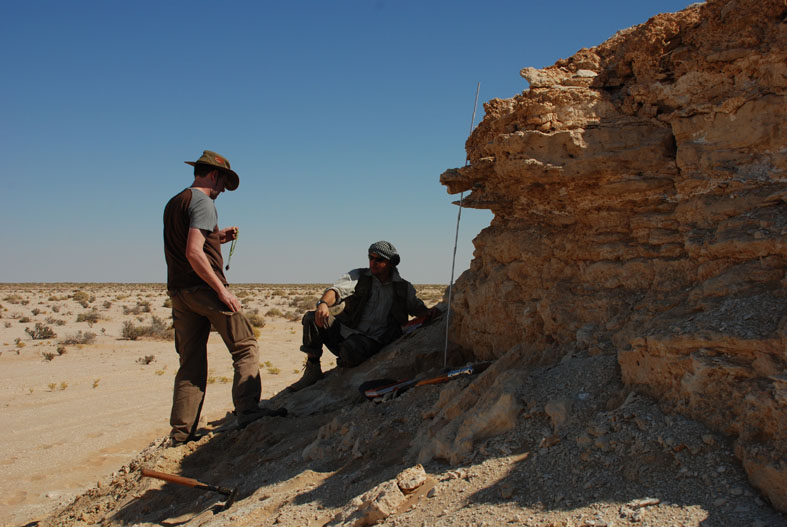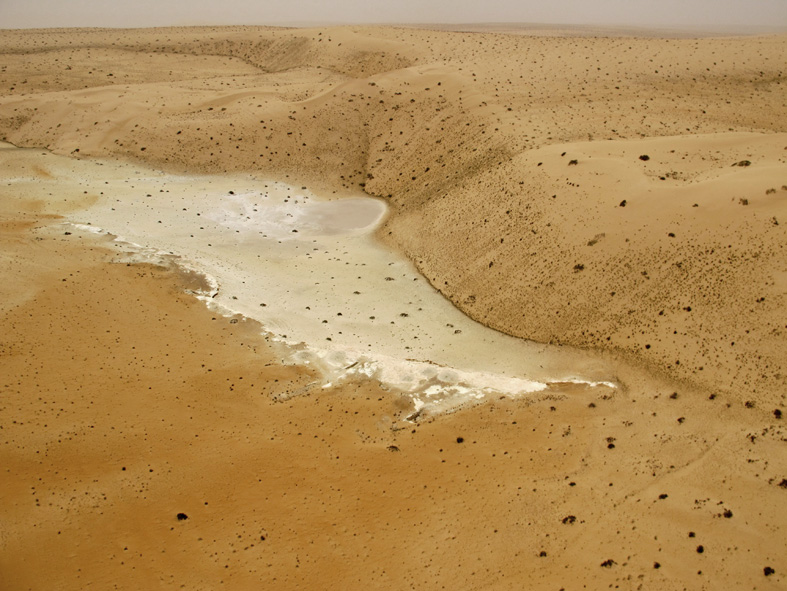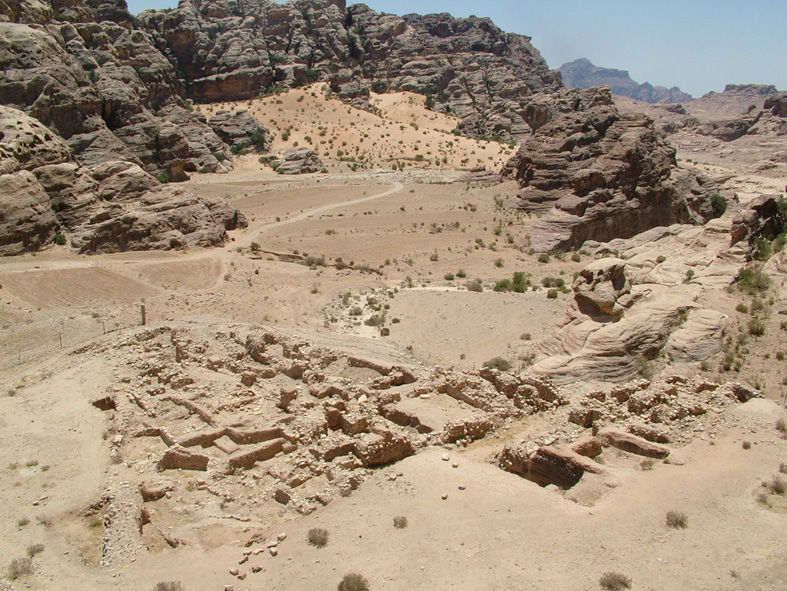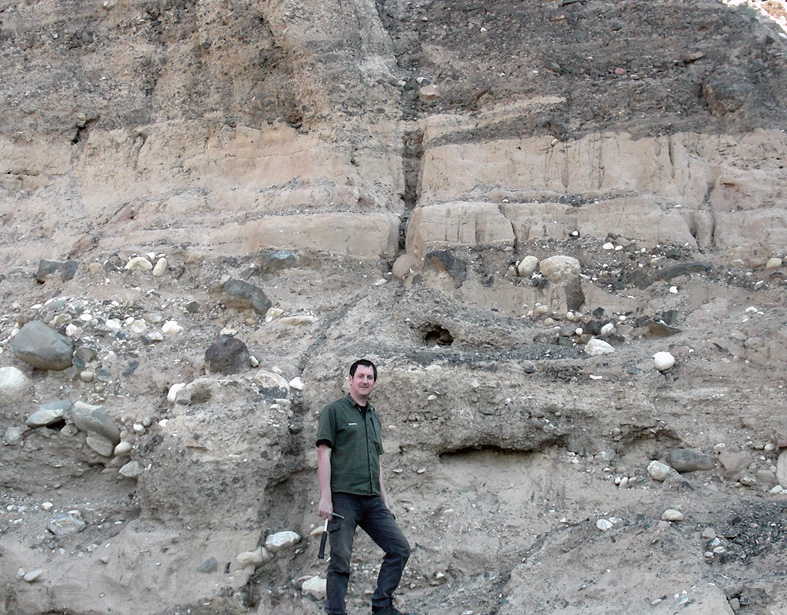Quaternary environmental change in Arabia
|
Arabia is today mainly characterised by arid climate conditions and vast deserts. Relicts of ancient lake deposits demonstrate more humid periods in the past, mainly dating to the Late Quaternary. At this time, the constellation of Earth’s orbital parametres caused a peak of summer insolation in the norther hemisphere and an extension of Monsoon related precipitation to the north. This caused the formation of partially perennial lakes and activated rivers systems together with the establishment of a rich fauna and flora in a savannah-like environment. Archaeological finds indicate that the Arabian Peninsula was populated by stone-age people at that time. Archives deposited in wetlands of semi-arid areas (Jordan) allow for the reconstruction of past environmental conditions (e.g., vegetation changes, fire occurrences and frequency). In combination with archaeological findings, intriguing questions of potential links between societal evolution, such as the development of first settlements or the start of agriculture, and climate change can be addressed. Until recently, the earlier, Pleistocene environmental history of Arabia was less well known, despite the fact the region is crucial for the dispersal of early modern humans. Anatomically modern humans developed ca. 150’000 years ago in East Africa and settled on the western bands of the Red Sea during the Last Interglacial. Traditionally, it was assumed that dispersal followed the River Nile and continued through the Levant. Another theory presumes that humans crossed the southern tip of the Red Sea and moved through Arabia. However, this would have been only possible under much more humid conditions than those of the presence. Research into past environments of Arabia focusses on selected regions in the Sultanate of Oman, the United Arab Emirates, the Kingdom of Saudi Arabia and the Kingdom of Jordan. Since 1999, more than 25 articles in international journals have been published by present members of the research group in Freiburg. Research continues in collaboration with colleagues from, for example, the Universities of Aachen, Lyon and Oxford. |
|


